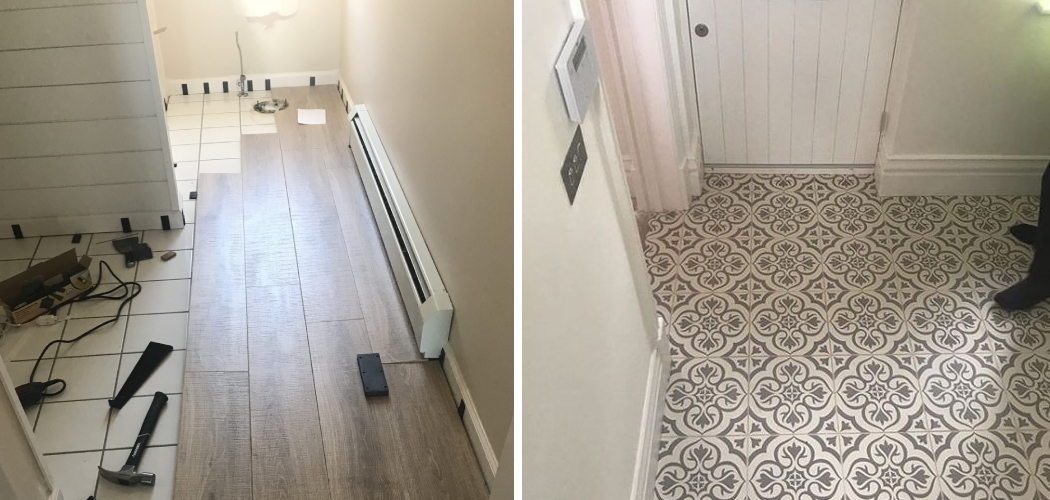Renovating a space often involves updating the flooring, but the prospect of removing existing tile can be daunting, time-consuming, and costly. Fortunately, there are creative and practical solutions for giving your tile floor a facelift without the need for extensive removal. In this article, we explore various techniques and options on how can i cover my tile floor without removing it effectively.
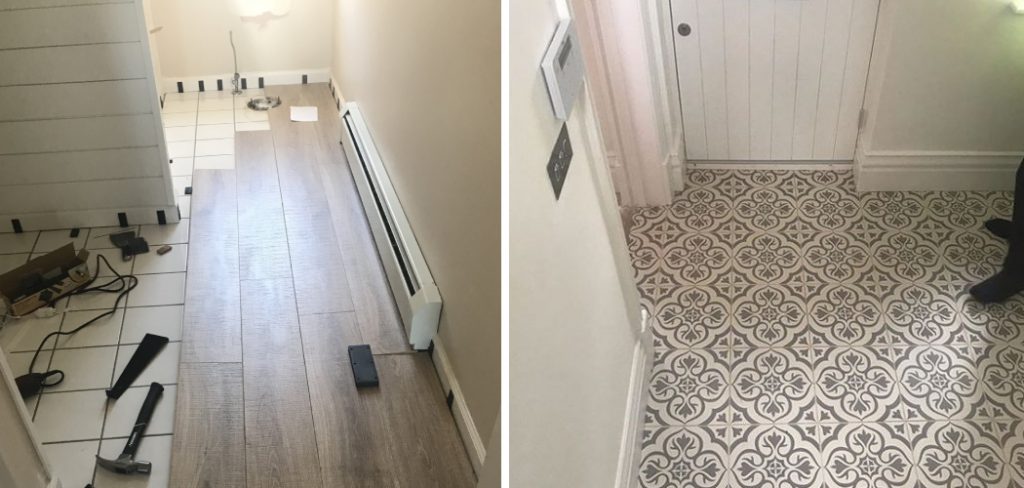
From using peel-and-stick vinyl tiles to installing floating floors, each method offers a unique approach to conceal and transform the appearance of your existing tile. Whether you’re seeking a temporary solution or a long-term upgrade, understanding how to cover your tile floor opens up a world of possibilities for refreshing your space without the hassle of tearing out the old tiles.
Join us as we unravel the tips and tricks to achieve a stylish and updated look while preserving the integrity of your original tile flooring.
Reasons for Covering Tile Floors without Removal
There are several reasons why someone might want to cover their tile floor without removing it. Some of the most common reasons include budget constraints, lack of time or resources for a full renovation, and wanting to change the look of the space without committing to permanent changes. In this section, we will dive deeper into each of these reasons and explore why covering tile floors can be a great solution.
Budget Constraints
One of the most common reasons for choosing to cover a tile floor rather than removing it is budget constraints. Removing and replacing a tile floor can be a costly endeavor, especially if you are hiring professionals to do the work. Covering the existing tile can achieve a new look without breaking the bank. This is particularly appealing for those on a tight budget or for landlords who want to update their rental properties without investing too much money into it.
Lack of Time or Resources
Another reason why people may choose to cover their tile floors is simply due to lack of time or resources. Removing tile can be a messy and time-consuming process, requiring specialized tools and skills. For some, the thought of tackling such a project is overwhelming, especially for those with busy schedules. Covering the tile provides a quick and easy solution that can be completed in a fraction of the time it would take to remove and replace the tiles.
Change of Look Without Commitment
Finally, covering tile floors allows for a change of look without committing to permanent changes. This is particularly attractive for renters who are not allowed to make permanent changes to their living space. By covering the tile, you can achieve a new look and feel without risking your security deposit or violating any rental agreements.
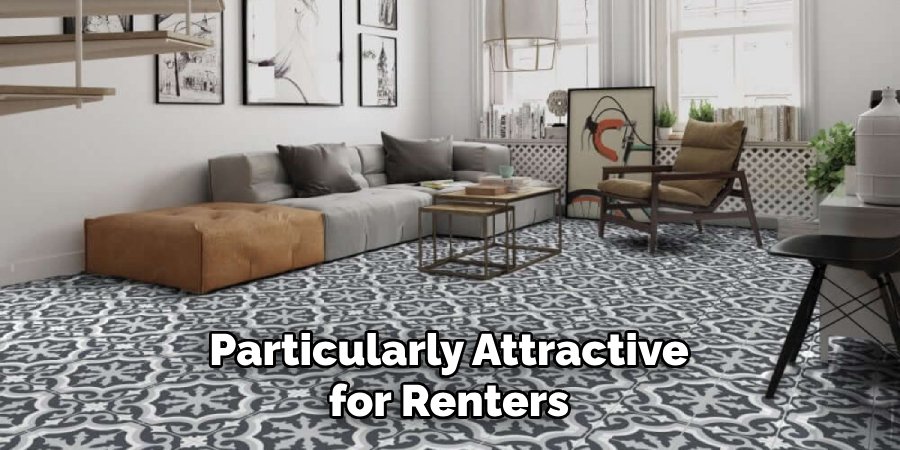
10 Methods How Can I Cover My Tile Floor without Removing It
1. Area rugs
One of the simplest ways to cover your tile floor is by using area rugs. Not only do they add a decorative touch to your space, but they also provide a soft and comfortable surface to walk on. You can choose from a variety of shapes, sizes, and styles to match your existing decor.
2. Vinyl flooring
Vinyl flooring is a popular option for covering tile floors as it is easy to install and relatively inexpensive. It comes in a variety of designs, including ones that mimic the look of natural stone or hardwood. Additionally, vinyl is water-resistant, making it a great choice for bathrooms or kitchens.
3. Laminate flooring
Similar to vinyl, laminate flooring is another affordable option for covering tile floors. It is made up of several layers of synthetic materials that are fused together, creating a durable and water-resistant surface. Laminate flooring also comes in various designs and can be installed over your existing tile without needing to remove it.
4. Carpet tiles
Carpet tiles are an excellent option if you want to cover your tile floor temporarily or if you want the flexibility to change the design easily. They come in various colors and patterns and can be easily installed without any special tools or adhesives.
5. Epoxy coating
If you want to transform the look of your tile floor completely, consider applying an epoxy coating over it. This durable and glossy finish will give your floor a sleek and modern look while also protecting it from wear and tear.
6. Interlocking foam mats
Interlocking foam mats are another temporary solution for covering tile floors that are perfect for playrooms or home gyms. These lightweight mats can be easily put together like puzzle pieces, creating a soft and cushioned surface that is also easy to clean.
7. Paint
For an affordable DIY solution, consider painting your tile floor with specialized paint designed for this purpose. You can choose from various colors and patterns to create a unique and personalized look for your space.
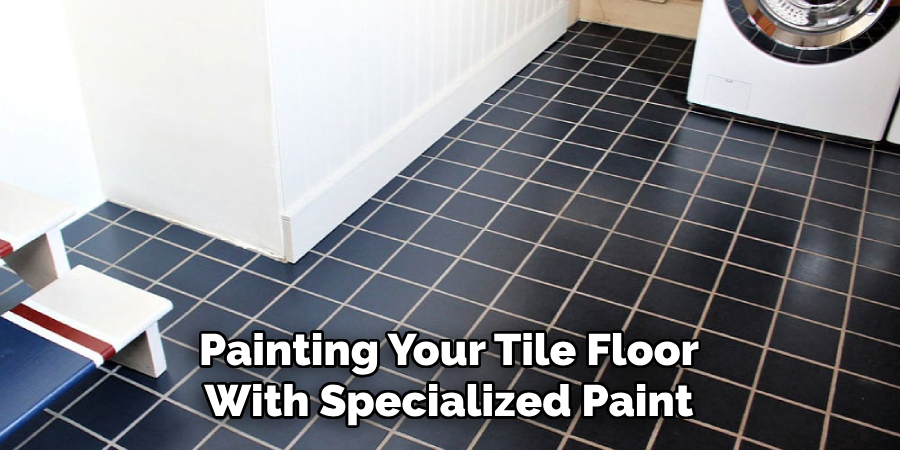
8. Peel-and-stick tile decals
Peel-and-stick tile decals are an easy and affordable way to cover up your tile floor without the hassle of removing it. These adhesive stickers come in various designs, such as geometric patterns or solid colors, and can be easily applied over your existing tiles.
9. Cork flooring
Cork flooring is another eco-friendly option for covering your tile floor. It is made from the bark of cork oak trees and provides a comfortable and warm surface to walk on. Additionally, it is water-resistant and easy to install.
10. Hardwood flooring
If you want to completely transform the look of your tile floor, consider installing hardwood flooring over it. While this may require some professional help, it will add a luxurious touch to your space and increase its value. Plus, you won’t have to remove your existing tile as hardwood can be installed directly over it.
Things to Consider When Covering Tile Floors
Before you cover your tile floors, there are a few things to consider to ensure that the process goes smoothly and yields the desired results. Here are some important considerations to keep in mind:
The Condition of Your Existing Tile Floor:
Before deciding to cover your tile floors, it’s important to assess their current condition. If the tiles are cracked, chipped, or uneven, simply covering them up may not be the best solution. In such cases, it might be more beneficial and cost-effective to remove the tiles and replace them with a new flooring material.
Type of Covering Material:
There are several options available when it comes to covering tile floors, such as vinyl, laminate, carpet tiles, or even hardwood. Each of these materials has its own pros and cons, so it’s important to do your research and choose the one that best fits your needs and preferences.
Preparation of the Surface:
Before installing any type of covering over your tile floor, it’s essential to prepare the surface properly. This includes cleaning the tiles thoroughly, filling in any cracks or holes, and ensuring that the surface is completely dry before starting the installation process.
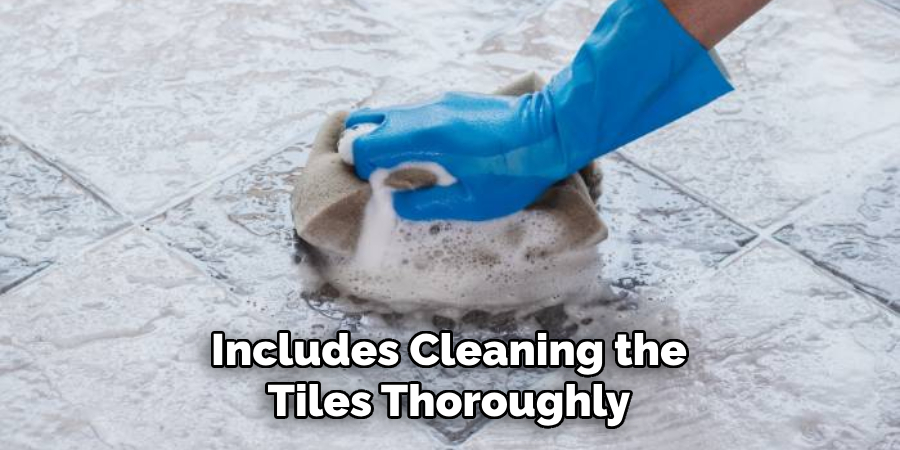
Installation Method:
Depending on the type of covering material you choose, there are different methods of installation. For example, vinyl and laminate can be installed as floating floors, while carpet tiles require adhesive to secure them in place. Research the installation process for your chosen material and make sure you have the necessary tools and skills to complete the job.
Common Mistakes to Avoid When Covering Your Tile Floor
When it comes to home renovation or remodeling, one of the areas that many homeowners struggle with is their tile flooring. While tiles can be a durable and stylish option for floors, they may not always match your changing taste or design preferences as time goes by.
In such cases, covering your tile floor might seem like a logical solution. However, there are several mistakes that people often make when attempting to cover their tile floors, which can end up costing them time, effort, and money. Here are some common mistakes to avoid when covering your tile floor:
1. Using the Wrong Type of Flooring
One of the biggest mistakes people make is choosing the wrong type of flooring to cover their tiles. This can be a costly mistake, as not all types of flooring are suitable for covering tiles. For instance, hardwood or laminate floors may not adhere well to tiles and can end up being uneven or prone to damage. It is important to do your research and consult with a professional before selecting the type of flooring to cover your tile floor.
2. Not Prepping the Tiles Properly
Before covering your tile floor, it is crucial to prepare the surface properly. This involves thoroughly cleaning the tiles and filling in any cracks or holes with a suitable filler. Failure to do so can result in an uneven surface, which will affect the final look and durability of your new flooring.
3. Not Measuring Accurately
Another common mistake when covering tile floors is not measuring accurately. It is important to measure the room precisely and account for any odd angles or corners. This will ensure that you have enough flooring material and avoid any unexpected surprises or delays during the installation process.
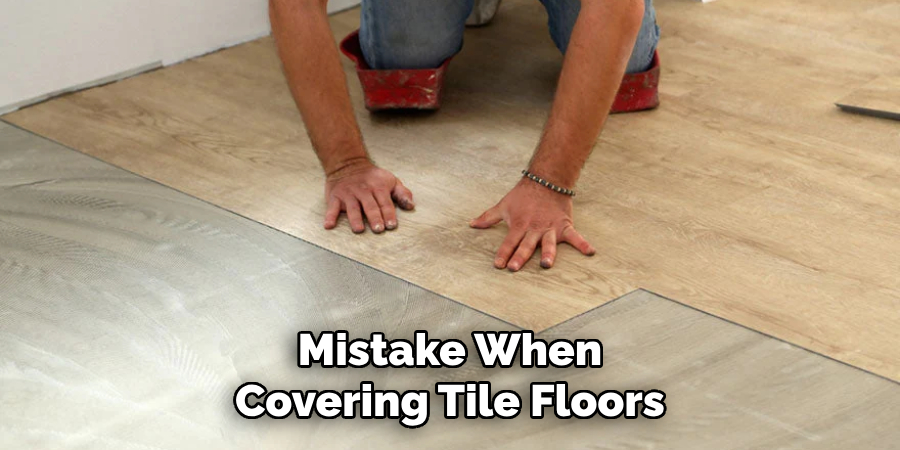
Conclusion
In conclusion, covering your tile floor without removing it is not only a cost-effective solution, but also a creative way to spruce up your space. With options such as vinyl flooring, carpet tiles, and even decorative rugs, the possibilities are endless when it comes to transforming your tile floor. Not only that, but this approach also saves you from the hassle and expenses of removing the existing floor.
So why wait? Take advantage of these alternatives and give your boring tile floors a new lease on life! With a bit of research and creativity, you can achieve a stunning and unique look for your home without breaking the bank or having to undergo any major renovations. Thanks for reading, and we hope this has g iven you some inspiration on how can i cover my tile floor without removing it!
